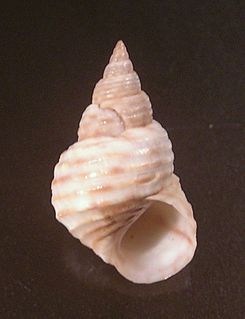
Cingulata, part of the superorder Xenarthra, is an order of armored New World placental mammals. Dasypodids and chlamyphorids, the armadillos, are the only surviving families in the order. Two groups of cingulates much larger than extant armadillos existed until recently: pampatheriids, which reached weights of up to 200 kg (440 lb) and chlamyphorid glyptodonts, which attained masses of 2,000 kg (4,400 lb) or more.

The Sphinginae are a subfamily of the hawkmoths (Sphingidae), moths of the order Lepidoptera. The subfamily was first described by Pierre André Latreille in 1802. Notable taxa include the pink-spotted hawkmoth, being a very common and recognizable species, the death's-head hawkmoths of Silence of the Lambs fame, and Xanthopan morganii with its enormous proboscis.

Pyrausta cingulata, the silver-barred sable, is a species of moth of the family Crambidae. It was described by Carl Linnaeus in his 1758 10th edition of Systema Naturae. It is found in Europe.
The eastern cherry fruit fly, Rhagoletis cingulata, is a species of tephritid or fruit flies in the genus Rhagoletis of the family Tephritidae.

Amegilla cingulata, commonly known as the blue-banded bee, is an Australian native bee that occurs in many other regions. Currently, several scientific organizations are conducting research on how the blue-banded bee benefits agriculture through its distinctive "buzz pollination". These bees are very important for the production of food and contribute to at least 30% of crops in Australia.

Oberea is a genus of longhorn beetles, most of which are stem borers of various plants, including blackberries and their relatives.

Pirenella cingulata is a species of medium-sized sea snails or mud snails, marine gastropod mollusks in the family Potamididae, the horn snails.

Trochia cingulata, common name : the girdled dogwhelk, is a species of sea snail, a marine gastropod mollusk in the family Muricidae, the murex snails or rock snails.

Littoraria cingulata is a species of sea snail, a marine gastropod mollusk in the family Littorinidae, the winkles or periwinkles.

Scolopendra cingulata, also known as Megarian banded centipede, and the Mediterranean banded centipede, is a species of centipede, and "the most common scolopendromorph species in the Mediterranean area".
Oberea nyassana is a species of beetle in the family Cerambycidae. It was described by Stephan von Breuning in 1956.
Oberea consentanea is a species of beetle in the family Cerambycidae. It was described by Francis Polkinghorne Pascoe in 1867. It is known from Borneo.
Oberea rubetra is a species of beetle in the family Cerambycidae. It was described by Francis Polkinghorne Pascoe in 1858. It is known from Sumatra, Borneo and Malaysia.
Oberea neavei is a species of beetle in the family Cerambycidae. It was described by Per Olof Christopher Aurivillius in 1914.
Oberea erythrostoma is a species of beetle in the family Cerambycidae. It was described by Heller in 1915. It is known from the Philippines.
Oberea ferruginea is a species of beetle in the family Cerambycidae. It was described by Thunberg in 1787.
Oberea fuscipennis is a species of beetle in the family Cerambycidae. It was described by Chevrolat in 1852.
Oberea vittata is a species of beetle in the family Cerambycidae. It was described by Blessig in 1873. It is known from Russia, China, Mongolia, and Japan.
Somatochlora cingulata, the lake emerald, is a species of emerald dragonfly in the family Corduliidae. It is found in North America.










